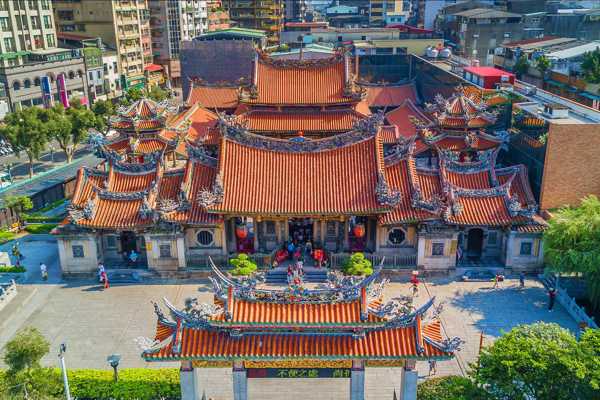The weather in Taipei features hot, wet summers and cold, dry winters due to Taiwan’s subtropical climate and Pacific Ocean location. As the island is hit with both monsoon cycles, it is known for its frequent rainy days, with Pacific typhoons adding 2 or 3 big storms each year. The humidity rarely drops below 70 per cent, making cold periods feel extremely cold and hot periods feel very sticky.
Taipei actually has 4 seasons, like any temperate climate. However, many count only the long summers (May to September) and winters (November to March), with spring and autumn (April and October respectively) being comparatively brief. Rainfall is fairly unpredictable – you could have 2 weeks of uninterrupted drizzle or 2 weeks of bright sunshine. However, you can generally rely on the fact that the hotter it is, the wetter it will be. Historically, December is the month with the lowest rainfall (60 mm) while August sees the most (300 mm).
The best time to go to Taipei is between March and May. During this time, the average temperatures are at a bearable 22°C, rising from the winter lows but not yet at the summer highs. The cherry trees are still heavy with their beautiful blossoms and the rainfall is comparatively light (around 177 mm per month) because it is between the 2 monsoon seasons and before the typhoon season begins.
The weather in Taipei is at its hottest at the peak of its long, humid summers – particularly June, July and August – when temperatures can get close to 40°C, with the relative humidity making it feel even higher than that. This is also the peak of the southwest monsoon, which sees monthly rainfall as high as 360 mm.
It’s important to note that Taiwan’s summer is in the middle of the Pacific typhoon season, which runs from June to October. Taipei is generally safe as most of the city has been developed to be typhoon resistant, but the high winds and heavy rainfall may impact your travel plans. If you visit during typhoon season, you’re advised to keep track of weather reports.
The main peak tourism season in the city is during the summer, from May to September. The weather in Taipei may be mostly rainy, but the occasionally sunny days are bright and hot enough to fill up the local hotels. There is a second peak season in the middle of the cold winter for Chinese New Year. It generally falls around the end of January and the start of February, and tourists flood to the city to enjoy the Lantern Festival and other New Year celebrations, with hotels filling up fast. If you want to enjoy the festivities, you should book early.
The fewest tourist arrivals are recorded during the winter, particularly from November to January. At this time, the rain is considerably lighter (as little as 73 mm per month) because the northeast monsoon does not affect the weather in Taipei as badly, but the temperatures are also lower, averaging about 16°C in January. With the high humidity, this feels more like 6°C would in a temperate climate.
Just as the city has 2 peak seasons, it also has 2 low seasons. Airfares and hotel rates are often at their lowest in Taipei during “Ghost Month”. During this period of nationwide elaborate rituals, there are few domestic tourists in Taipei because the Taiwanese believe it to be unlucky to travel. As this event is based on the lunar calendar, the exact start date varies from year to year, but is usually around the end of August or the start of September. At this time, you will still have the summer heat of 30°C and the monsoon rainfall of well over 300 mm per month.
This article includes opinions of the Go Guides editorial team. Hotels.com compensates authors for their writings appearing on this site; such compensation may include travel and other costs.






















